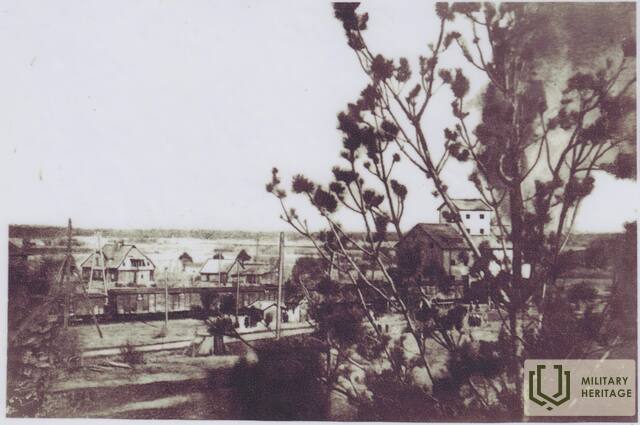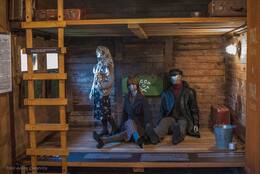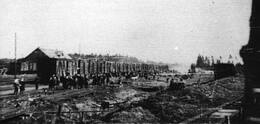The deportation train secretly photographed near Skrunda Station in 1949

On 25 March 1949, Elmārs Heniņš, a pupil in Skrunda, witnessed his classmates being taken away. He took his camera and climbed a pine tree on a nearby hill to document what was happening, later hiding the pictures.
Writer and publicist Artūrs Heniņš recalls the following episode about the events of March 1949:
But in the room I witness a harsh conversation between my father and his brother.
− Where were you?
− Stations in the pines.
− What were you looking for there?
− I took a picture of the train.
− Why did you have to do that?
− They took my classmates Dzērves Herbert and Vilma there.
"You wanted us to be taken away too?"
A 6th grade student had taken a very rare photo report at the scene of the incident at Skrunda Station with his father's camera, which has survived to this day on a film worn by the ravages of time.
Artūrs Heniņš, Jaunā Gaita No. 191, March 1993
Related timeline
Related topics
Related objects
Cattle wagon used for deportations – museum at Skrunda train station
To commemorate the deportations of June 1941 and March 1949, a memorial stone and a four-axle wagon, which also serves as the museum dedicated to deportations, was erected at the Skrunda railway station. This is the first wagon-type museum in Latvia that holds a permanent exhibit of photos, letters, memoirs, documents and various items made by the people deported from the Skrunda station. Skrunda station was a location where deportees were gathered, and one of the three stations in the region to which people from the Skrunda and the Kuldīga area were brought. In 1941, the family of the first President of the restored Republic of Latvia, Guntis Ulmanis, was deported from here to Krasnoyarsk Krai in Siberia.
With the help of deportations, the Soviets dealt with supporters of the national partizans’ and at the same time intimidated the remaining rural population, forcing them to join the collective farms.
Stende railway station in narrow gauge railway network and the memorial stone for deportations
The railway line Ventspils - Mazirbe, as well as the Stende - Dundaga extension to Mazirbe with a branch to Pitrags, were intended only for strategic military needs. During the construction of these lines, and afterwards, all civilians were evacuated from the region. The main task of the military railways in the Irbe Strait area was to provide the German army's coastal defence positions with guns and ammunition.
These military-only military railways also connected the three most important lighthouses, located in Oviši, Mikeltornis and Šlītere.
Nevertheless, passenger transport was also provided as early as the years of World War I.
A memorial stone (1989) to the deported Latvians of 1941 and 1949 is located at the Stende railway station.
On 30 October 1919, Stende railway station was occupied by Bermont troops. On 17 November, soldiers of the Latvian army led by K. Šnēbergs attacked the station, driving away a wagon with weapons, war materials and grain. 6 soldiers were awarded the Order of the Order for these battles: K. Bumovskis (1891-1976), P. Strautiņš (1883-1969), R. Plotnieks (1891-1965), E. Jansons (1894-1977).






